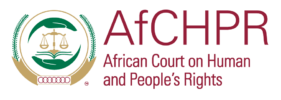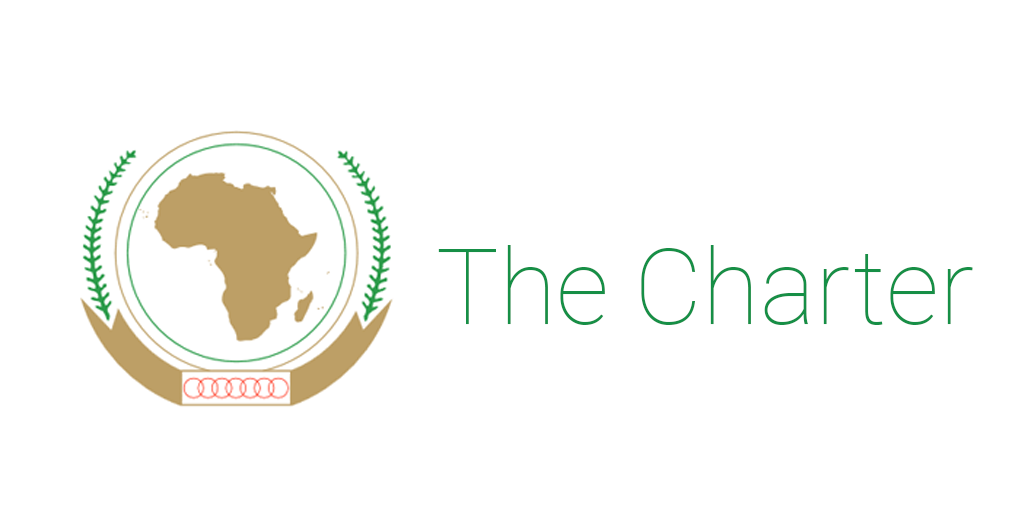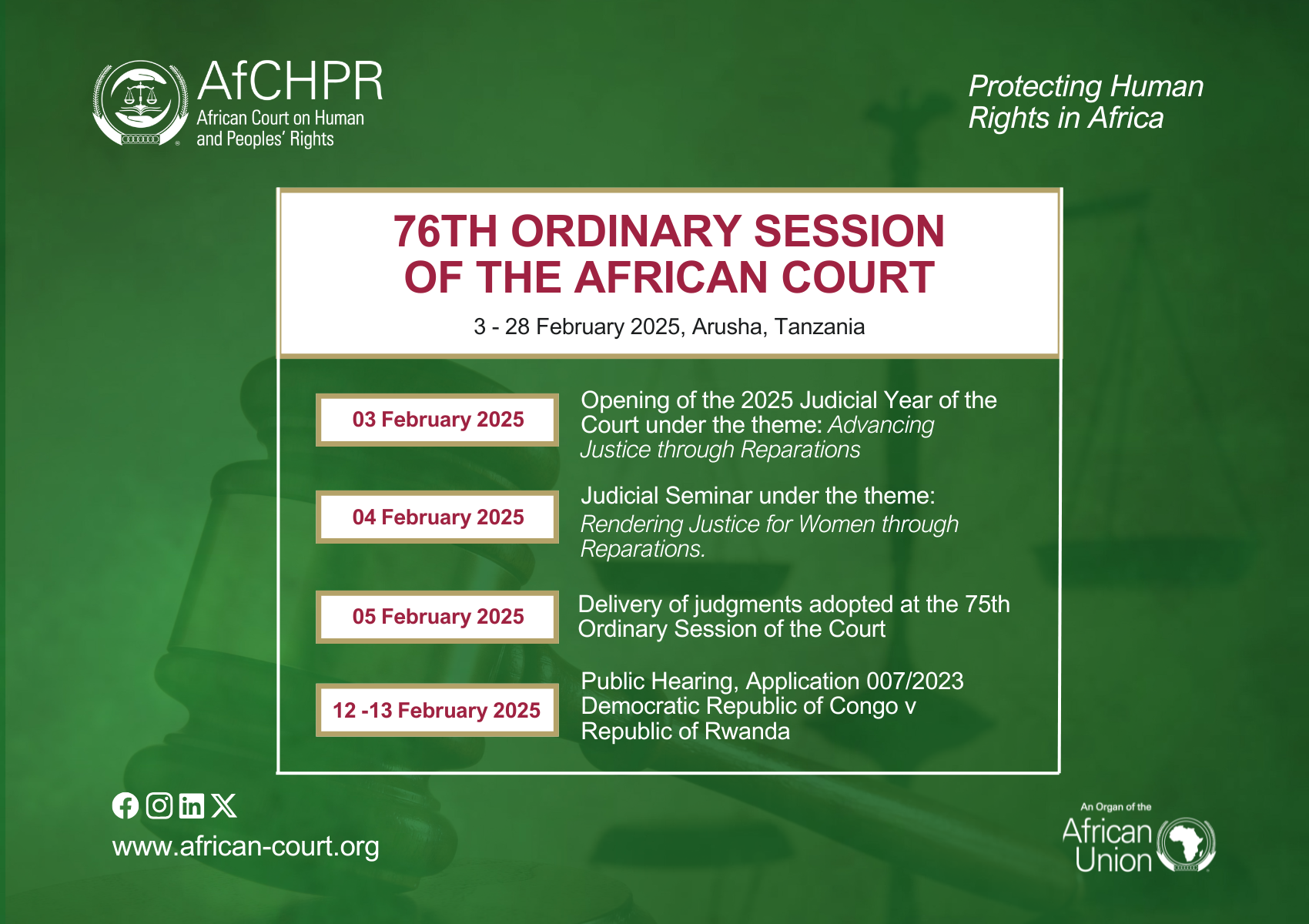HUMAN RIGHTS DEVELOPMENT INITIATIVE
LLM PROGRAMME ON INTERNATIONAL HUMAN RIGHTS LAW AND HIV IN AFRICA
BY
PROF. GERARD NIYUNGEKO,
PRESIDENT OF THE COUT
PRETORIA
28 JULY 2011
THE NORMINAL AND INSTITUTIONAL FRAMEWORK
- THE MAIN LEGAL INSTRUMENTS
- The African Charter on Human and Peoples Rights (1981)
- The African Charter on the Rights and Well Being of the Child (july 1990)
- Protocol to the African Charter on Human and Peoples’ Rights on the Establishment of the African Court on Human and Peoples’ Rights (1988)
- Protocol to the African Charter on Human and Peoples’ Rights on the Rights of the Woman (2003)
- THE MAIN INSTITUTIONS IN CHARGE OF HUMAN RIGHTS
- The African Commission on Human and Peoples’ Rights
- The African Committee of Experts on the Rights and Well being of the Child
- The African Court on Human and Peoples’ Rights
11. THE ORIGIN OF THE COURT
1. The Lagos Human Rights Congress(1961)
2. Several similar initiatives between 1960 and 1970
3. The drafting of the African Charter on Human and Peoples’ Rights 1978-1981
4. OAU summit in Tunis, (1994)
5. The meeting of government experts between 1995 and 1997; the meeting of Ministers of Justice in December 1997
6. The meeting of Council of Ministers of the OAU (February 1998)
7. OAU Summit, June 1998 Ouagadougou, Burkina Faso: Adoption of the Protocol establishing the Court
8. Entry into force of the Protocol in January 2004
9. Elections and assumption of duty of the first judges: January and July 2006
GENERAL ORGANIZATION OF THE COURT
- COMPOSITION
- Number of judges
- Qualifications
- Representation
- Designation
- ELEMENTS ON THE STATUS OF JUDGES
- Term of office
- Employment of judges on part time basis
- Independence
- Incompatibilities
- Discipline
- STRUCTURE AND INTERNAL FUNCTIONNING
- The presidency of the Court
- Committees of the Court
- The Registry of the Court
- The Seat of the Court
- The Budget of the Court
- Court Sessions
- Quorum
- Official languages and working languages
1V THE ROLE OF THE COURT IN CONTENTIOUS MATTERS
- SEIZURE OF THE COURT
- The following are entitled to submit cases to the Court
A) The African Commission on Human and Peoples’ Rights
- The State Parties to the Protocol establishing the Court
- African Inter governmental organizations
- Individuals and Nongovernmental Organizations (on condition that the State concerned has made a special declaration recognizing the jurisdiction of the Court to receive applications from individuals)
- Modalities of seizure
Any Application submitted to the Court must obtain the following elements:-
- A summary of the facts of the matter
- Evidence
- Precise indications on the Applicant or his representatives, as well as the Defendant
- Alleged violations
- Proof of exhaustion of domestic remedies or of their abnormal extension
- Expected measures and injunctions
- Signature of the Applicant or his representative
- THE JURISDICTION OF THE COURT
- Material jurisdiction:
- Differences arising from the interpretation and application of the Charter, the Protocol and any other relevant instrument on human rights ratified by the States concerned.
- There is a wide range of application of the law
- Personal jurisdiction:
- The grounds of the Applicant: see supra entities entitled to submit cases to the Court
- The grounds of the Defendant: State Parties to the Protocol; Other entities?
- Territorial jurisdiction: localization of facts
- Temporal jurisdiction: this may include cases which occurred before the ratification of the Protocol or the deposit of the special declaration.
C. ADMISSIBILITY OF APPLICATIONS
- It should disclose the identity of the Applicant notwithstanding the latter’s request for anonymity
- It should comply with the Constitutive Act of the African Union and the Charter on Human and Peoples’ Rights
- It should not contain any disparaging or insulting language
- It should not be based exclusively on news disseminated through the mass media
- Be filed after exhausting domestic remedies, if any, unless it is obvious that this procedure is unduly prolonged
- It should be filed within a reasonable time from the date domestic remedies were exhausted or from the date set by the Court as being the commencement of the time limit which it shall be seized with the matter
- It does not concern cases already settled at the level of the UN or the AU
- PRINCIPLES GOVERNING PROCEDURE BEFORE THE COURT
- There are two types of proceedings: written and eventually oral
- Adversarial principle: communication of pleadings; the right of response
- Public hearings (when they take place)
- Rules governing evidence: liberal with regard to admissibility of evidence; possibility of the Court to play an active role
- Representation of parties: liberal
- Expenses
- Possibility of legal aid
- SPECIFIC PROCEDURES
- Interim measures
- Preliminary objections
- Intervention
- Joinder of cases and pleadings
- Judgment in default
- Out of Court settlement
- Discontinuance
- RULINGS OF THE COURT
- The need to give reasons for judgments
- Possibility of the Judge to make an individual or dissenting opinion
- Possible explanation of the ruling
cThe jurisdiction of the Court
dThe admissibility of the applications
eThe facts of the matter
- Evidence or no evidence of violation of the Charter or any other relevant legal instrument
- Compensation for damages
- Nature of the ruling
- Binding to all the litigating parties
- Final (except subject to interpretation or revision)
- Enforcement of the ruling: it depends on:
- The State concerned: commitment to comply with the ruling of the Court
- The Court’s obligation to make reports on refusal to comply with its decisions
- The Executive Council of the African Union: responsibility of ensuring the enforcement of the rulings on behalf of the Assembly of Heads of State and Government.
V. THE ROLE OF THE COURTNIN ADVISORY MATTERS
1. Entities that may seek an advisory opinion
a) Member States of the African Union
b) Any organ of the African Union
c) Any organization recognized by the African Union
- Modalities for applying for an advisory opinion
- Subject of the application:
- The application may concern any legal topic concerning the African Charter on Human and Peoples’ Rights or any other relevant human rights instrument.
- The request cannot be made for a matter pending before the African Commission on Human and Peoples’ Rights.
- The request must specify:
- The provisions of the Charter or the instrument on which the opinion is requested.
- The circumstances surrounding the request
- The names and addresses of representatives of entities who introduced the request.
B) PRINCIPLES GOVERNING PROCEDURE
1. Open to all States Parties to the Protocol and any other interested entity authorized by the Court.
2. Dual phase procedure: written and eventually oral
3. Adversarial principle: communication of documents. The right to respond
4. Public hearings (when they take place)
5. Application, mutatis mutandis, of other provisions relating to contentious procedure.
C. ADVISORY OPINION
1. In principle, the opinion is made in a public hearing
2. The opinion is motivated
3. The judges may attach an individual or a dissenting opinion
4. Is the opinion binding?
vi. THE APPLICABLE LAW
- The African Charter on Human and Peoples’ Rights
- Any other relevant human rights instruments ratified by the State concerned
V11. RELATIONS BETWEEN THE COURT AND THE COMMISSION
- The principle of complementarity in human rights protection
- From the Commission to the Court
- Possibility for the Commission to seize the Court for contentious matters
- From the Court to the Commission
a). Possibility for the Court to seek the opinion of the Commission on the admissibility of an application
b). Possibility of the Court to refer a matter to the Commission
4. Harmonization of the Rules of the Commission and those of the Court
5. Institutionalizing relations between the Court and the Commission
V111. THE MAIN CHALLENGES FACED BY THE COURT AND THE APPROPRIATE STRATEGIES
- Low rate of ratification of the Protocol establishing the Court
a)Current situation
b) strategies
2. Access to the Court for individuals and non governmental organizations
a)Current situation
b) Strategies
3. Promotion of the Court among Africans
a)Current situation
b)Strategies
4. Low administrative capacity of the Court
A) Current situation
b) Strategies
THE FUTURE OF THE COURT AS AN INSTITUTION
- The planned merger between the Court and the African Court of justice
- The planned extension of the jurisdiction of the Court to hear criminal cases.
X. THE CURRENT JURISPRUDENCE OF THE COURT
A. CONTENTIOUS MATTERS
- Statistics
- Cases treated
- Pending cases
- REQUEST FOR AN ADVISORY OPINION
- Statistics
- Pending applications
- CONCLUSION
CONCLUSION














